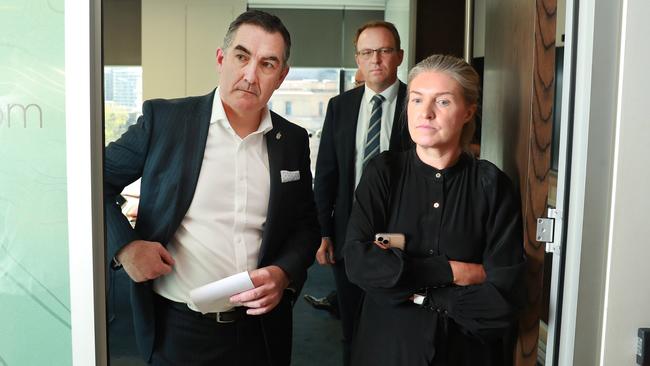Virgin Australia unable to avoid the inevitable
On eight occasions in recent weeks, Paul Scurrah sent proposals for a Virgin resuce to Canberra. Each time they were spiked.

On eight occasions in recent weeks, an increasingly desperate Virgin Australia chief executive Paul Scurrah pressed send on various proposals to Canberra designed to rescue his stricken, deeply unprofitable airline.
Each time they were spiked, leaving directors no option on Tuesday but to call in voluntary administrators from Deloitte.
“I’d be lying if I didn’t say I was disappointed,” Scurrah said.
“The correspondence that was going back and forwards was trying to structure it in a way that would address the government’s concerns around any criticism of potentially nationalising an airline or taking an equity stake. Ultimately, we didn’t get there.”
Virgin’s $5bn collapse is yet another chapter in the long history of “second airline” failures in this country. Since deregulation in 1990, the list includes Compass I, which crashed in 1991, a year after a price war; Compass Mark II (liquidity crisis in 1993, before its first birthday); Impulse (cashflow problems in 2001, a year after it started); Ansett (a storeyed collapse in 2001); Ozjet (started in 2005, but losses forced it out of business in 2006) and now Virgin.
While administrators said more than 10 parties were circling the airline, it was unclear how many of them were serious or little more than tyre kickers.
Despite the attractions of its highly profitable eastern seaboard network, at least before the coronavirus, the harsh reality is that Virgin is carrying $5bn in debt with next to no revenue.
The move into administration followed Scurrah’s last-ditch proposal for a $200m grant, which would have seen the airline through the next two weeks.
While this was considerably less than the $1.4bn loan guarantee Virgin had previously sought, the answer was again a resounding no, despite the recent precedent of the Trump administration bailing US pandemic-hit airlines.
Virgin also pressed the argument that its foreign shareholders, which dominate the register with a 90 per cent stake, had themselves been smashed by the pandemic, rendering them unable to save their floundering associate.
To the Morrison government, however, the politics of Australian taxpayer support for Virgin shareholders like billionaire Richard Branson’s Virgin Group, Singapore Airlines, Etihad Airways and Chinese conglomerates HNA and Nanshan was toxic, at best.
Ultimately, the events surrounding the Virgin board meeting on Monday were inevitable, given the firm’s sustained underperformance over a long period.
The government believed that the best option for the airline was voluntary administration, presenting an opportunity to wind back Virgin’s foreign ownership and return it to its no-frills roots.
“Under this model, our preferred outcome is that the airline emerges as a competitor with Qantas but not costing the government a dollar,” a senior government source told The Australian.
Sir Richard thinks otherwise. In a video released to Virgin Australia workers and on social media, he said recent events did not mean the end of the airline.
“In most countries, federal governments have stepped in, in this unprecedented crisis for aviation, to help their airlines,” he said. “Sadly, this has not happened in Australia. We are determined to see Virgin Australia back up and running soon.”



To join the conversation, please log in. Don't have an account? Register
Join the conversation, you are commenting as Logout